Back to Page
Amazon Advertising
Common Rejection Reasons For Sponsored Brands Static Image Ads
Common Rejection Reasons For Sponsored Brands Static Image Ads
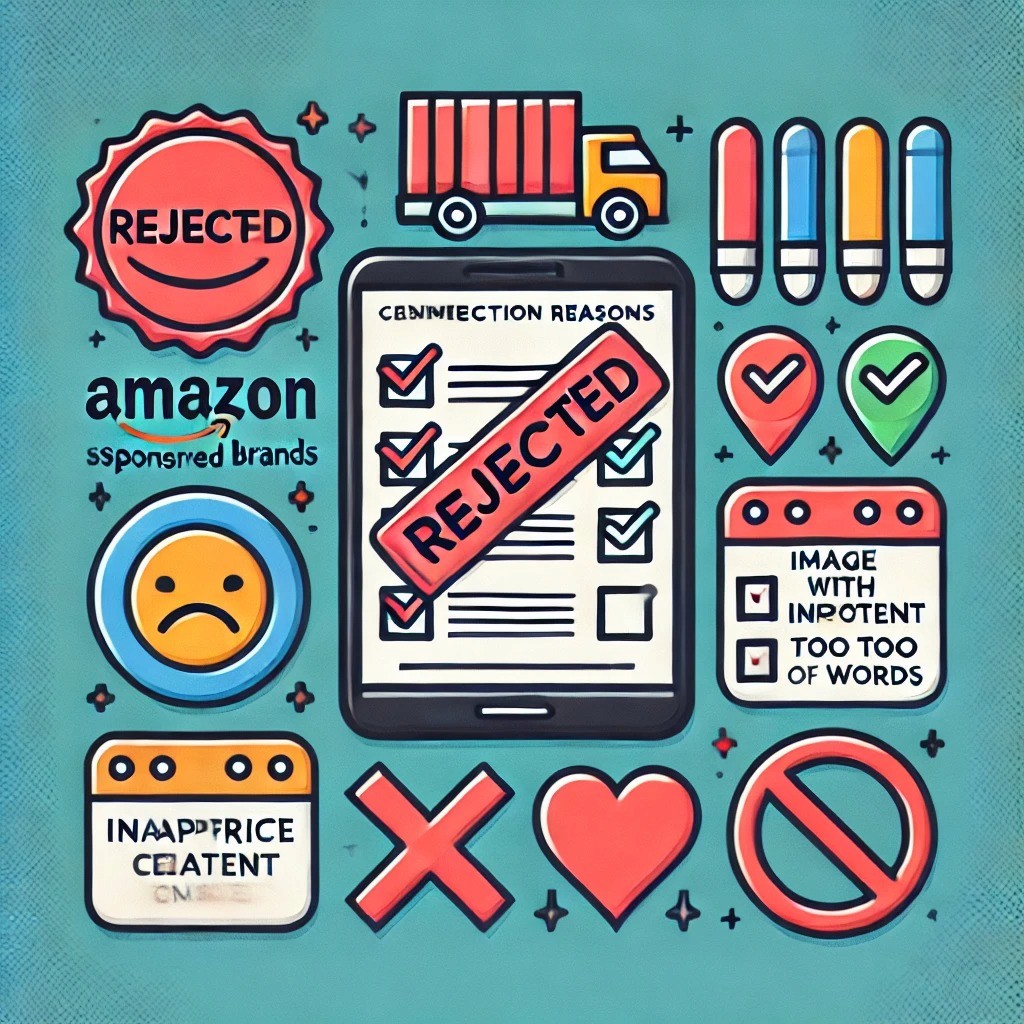

Back to Page
Amazon Advertising
Common Rejection Reasons For Sponsored Brands Static Image Ads

Amazon Sponsored Brands ads play a pivotal role in boosting brand awareness and driving customer engagement. However, gaining approval for these campaigns can sometimes be a challenging and intricate process due to Amazon's stringent guidelines. We understand that navigating these guidelines can feel like a headache, but fear not. Our Amazon PPC optimization experts have developed a comprehensive set of guidelines to help you get your Sponsored Brands approved seamlessly.
Common rejection reasons for Sponsored Brand ads
#1: Grammar and language requirements
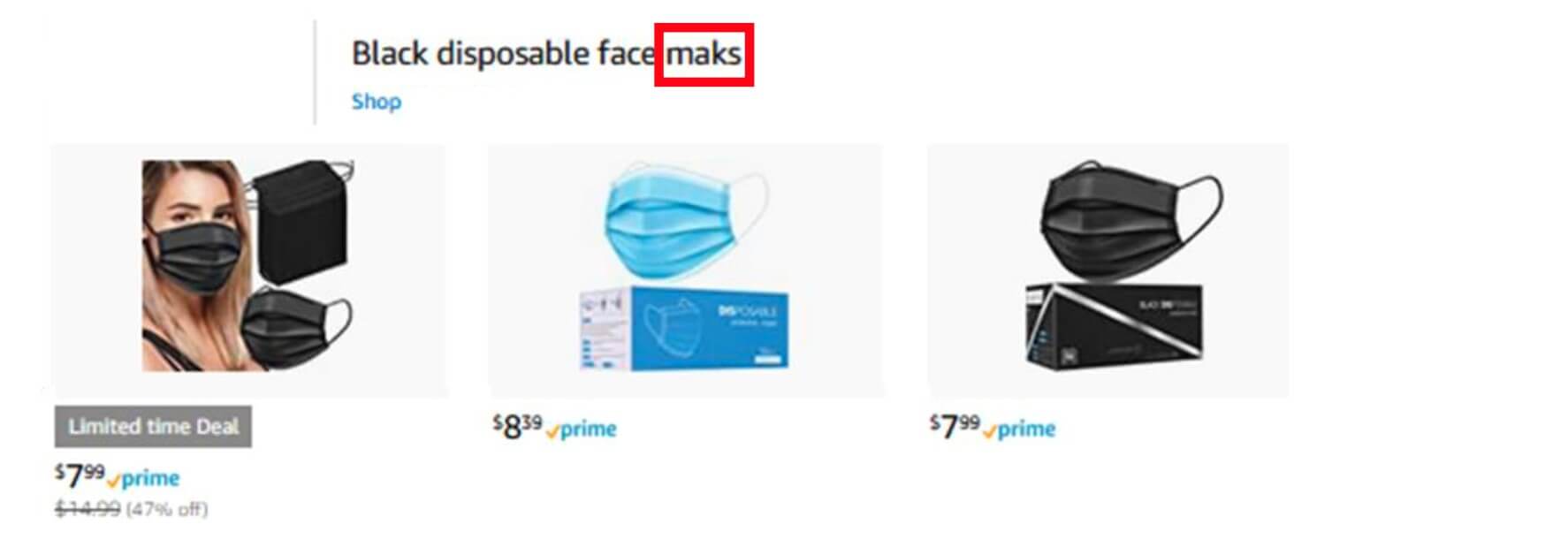
Image ref: Amazon
What causes rejection?
Amazon places a high value on clear and accurate language in advertising. Common issues leading to rejection include:
Misspellings/typos: Your ad copy should be entirely free from spelling errors or typographical mistakes. Even minor misspellings can detract from the professionalism of your ad.
Excessive punctuation: Avoid overusing punctuation marks in your ad text. Excessive use of punctuation can make your ad appear cluttered and less appealing.
Incorrect grammar: To ensure clarity and readability, it's crucial to use proper grammar and maintain the correct verb tense in your ad copy. Improper grammar can hinder comprehension and reflect negatively on your brand.
Slang or wordplay: While creativity in ad copy is essential, it's advisable to stick to formal language rather than relying on slang or wordplay. Amazon's audience spans diverse demographics, and using informal language may not resonate with all customers.
Unnecessary capitalization: Capitalize words appropriately in your ad copy. Avoid excessive capitalization, as it can make your text appear aggressive and less professional. Stick to standard capitalization rules.
How to avoid rejection
Proofread your ad copy meticulously to eliminate errors, and use language that adheres to standard grammar and Amazon's guidelines.
#2: Language requirements

Image ref: Amazon
What causes rejection?
Your ads should be in the primary language of the Amazon site where the ad is displayed. Rejection can occur if the language in your ad does not match the site's primary language.
How to avoid rejection
Ensure that your ad copy is in the primary language of the target Amazon site to prevent language-related rejection.
#3: Unsubstantiated claims

Image ref: Amazon
What causes rejection?
Amazon places a strong emphasis on the honesty and accuracy of claims made in advertising. Rejections can occur when ad content includes claims that lack verifiable evidence or fail to meet transparency standards. Here are the common issues that can lead to rejection:
Claims without evidence: It's crucial to avoid making claims in your ad copy that lack substantial evidence to support them. Making unverified or exaggerated claims can mislead customers and harm your brand's credibility.
Failure to disclose warranty: If your ad mentions a warranty, it's essential to ensure that this warranty is also transparently disclosed on the product detail page. Failing to do so can result in customer confusion and rejection.
Lack of citing sources: When citing statistics, facts, or figures in your ad copy, it's good practice to provide a credible source. Failing to cite sources for claims can lead to skepticism and rejection.
How to avoid rejection
Back up your claims with verifiable evidence and ensure that all mentioned warranties are transparently disclosed on the product detail page.
#4: Unrelated to product advertised

Image ref: Amazon
What causes rejection?
Your ad should align with the product being advertised on the product detail page. Rejection may occur if there is an inconsistency between the ad copy and the product detail page.
How to avoid rejection
Ensure that your ad accurately represents the product featured on the product detail page. Consistency is key to avoiding this type of rejection.
#5: Promotion end date
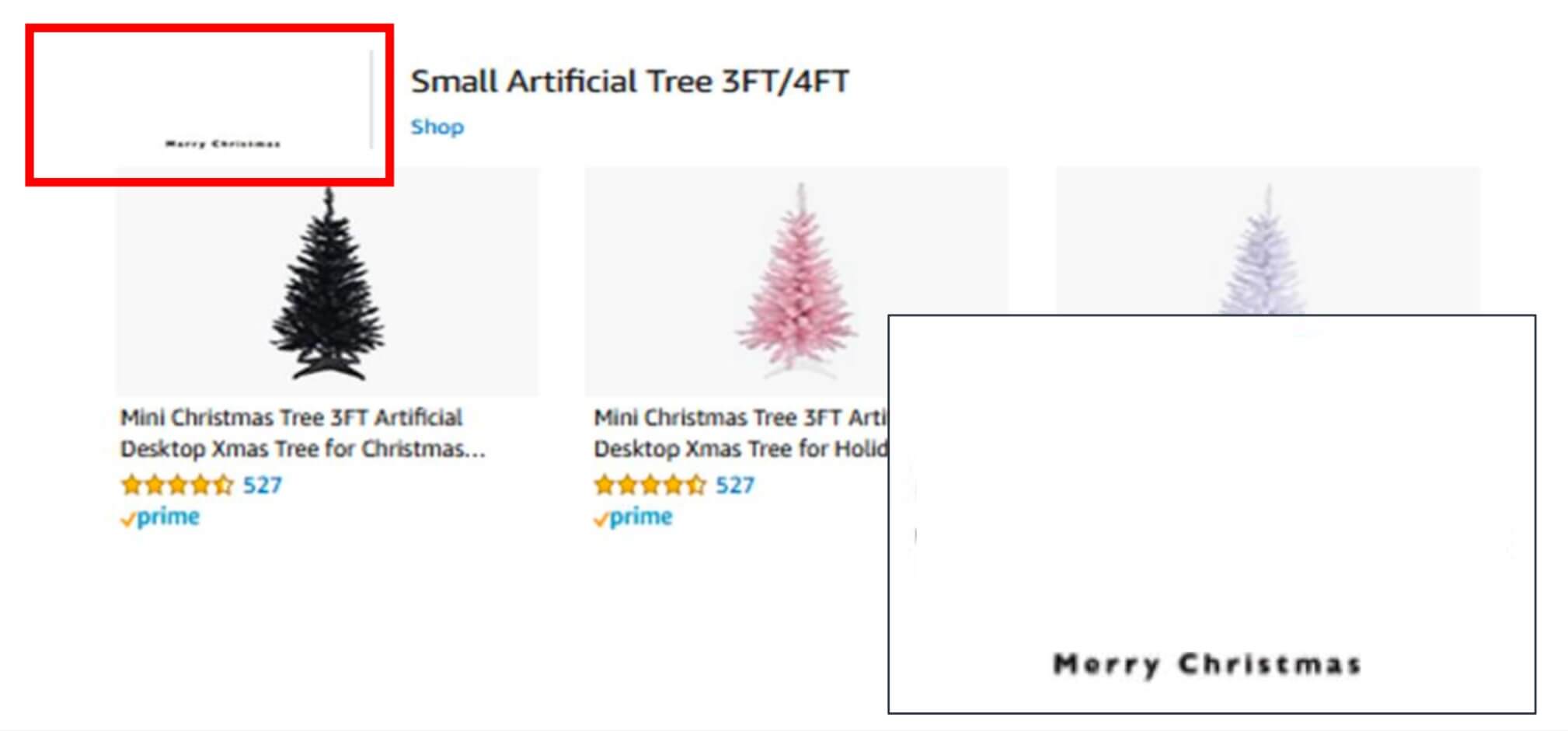
Image ref: Amazon
What causes rejection?
If you're running seasonal ads, they must only be advertised during the relevant promotional period and end on or before the actual date of the event. Advertisements with end dates that surpass the event date may face rejection.
How to avoid rejection
Carefully set your promotion end dates to align with the actual event date, ensuring that your ad remains compliant with Amazon's policies.
#6: Call to action (CTA)
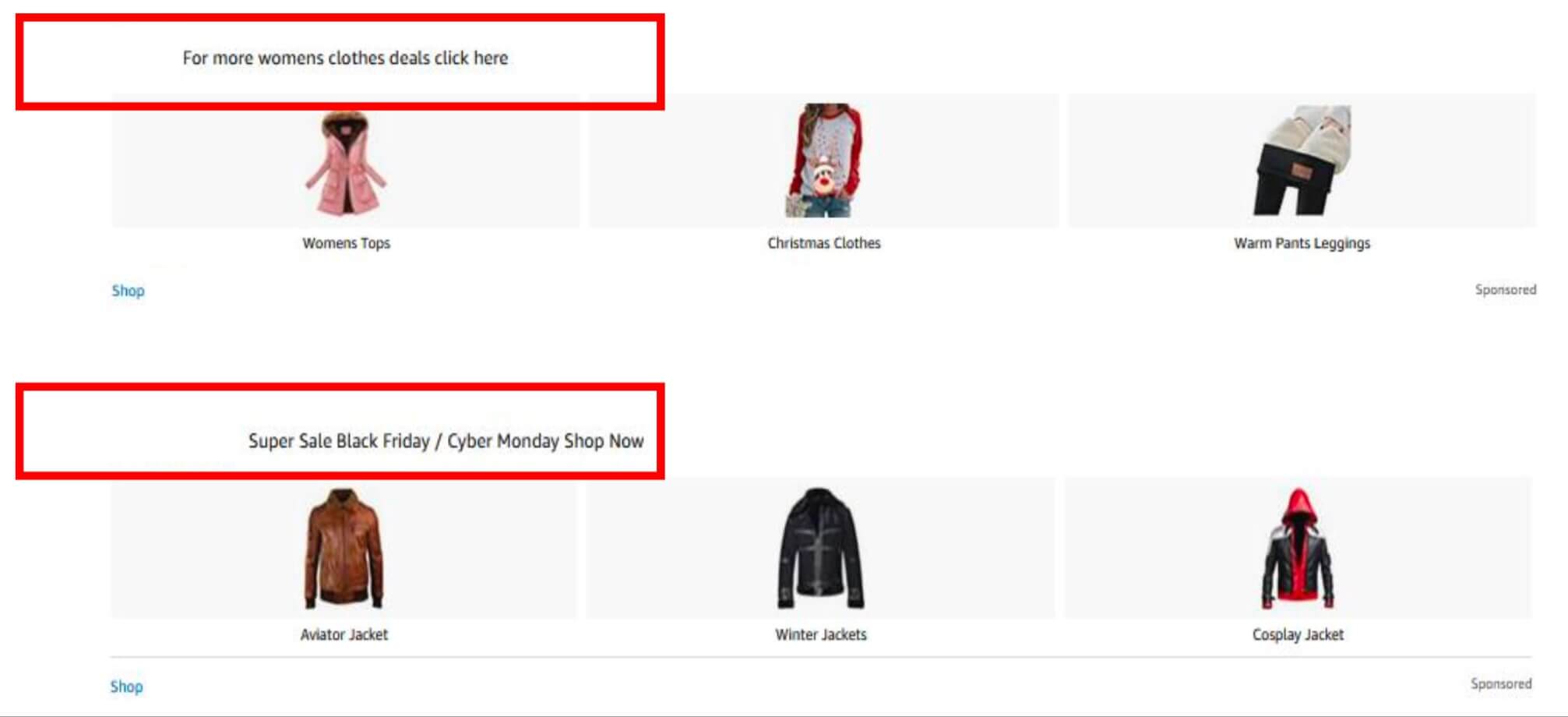
Image ref: Amazon
What causes rejection?
One of the common reasons for Sponsored Brands static image rejection revolves around the Call to Action (CTA) within your ad copy. Rejection can occur when the CTA you use duplicates the default CTA provided by Amazon.
The CTA is a critical element of your ad because it directly influences the action you want potential customers to take. Whether it's encouraging them to "Shop Now," "Explore Deals," or "Learn More," your CTA should be clear, concise, and tailored to the specific message of your ad.
How to avoid rejection
Match CTA with ad objective: Tailor your CTA to match the primary objective of your ad. For instance, if your goal is to drive sales, a CTA like "Shop Now" is appropriate.
Avoid default CTAs: Whenever possible, avoid using Amazon's default CTAs. Customizing your CTA can make your ad stand out and better align with your brand message.
Clarity is key: Ensure that your CTA is crystal clear and leaves no room for ambiguity. Customers should immediately understand what action is expected of them.
#7: Duplicate ASIN or Image

Image ref: Amazon
What causes rejection?
Identical products or product images within the same ad are not allowed. If you repeat a product in your ad creative, it may face rejection.
How to avoid rejection
Ensure that your ad creative features unique products and images to prevent duplication-related rejections.
#8: Format of additional text

What causes rejection?
Amazon places great importance on the visual consistency and quality of advertising content. Rejections can occur when ad images contradict the product detail page or when additional text does not appear naturally within the ad creative. Here are the common issues that can lead to rejection:
Images contradicting the product detail page: Your ad images should align with the product being advertised on the product detail page. Any discrepancies or inconsistencies can result in rejection.
Low-resolution or poor-quality images: To maintain a professional appearance, all images in your ad must be of high resolution and quality. Blurry or pixelated images can diminish the impact of your ad.
Non-natural placement of additional text: If your ad includes additional text, it should seamlessly complement the images and appear in a way that feels natural within the ad creative. Forced or awkward placement can lead to rejection.
How to avoid rejection
Ensure that any additional text in your ad creative complements the images and appears seamlessly within the ad.
#9: Brand logo

Image ref: Amazon
What causes rejection?
Brand logos should not have complex graphical backgrounds, be identical to a product image, contain a combination of logos, or include additional text that is not part of the brand logo or tagline/slogan.
How to avoid rejection
Review your brand logo to ensure it complies with Amazon's guidelines, avoiding complex backgrounds or extraneous text.
#10: Provocative content
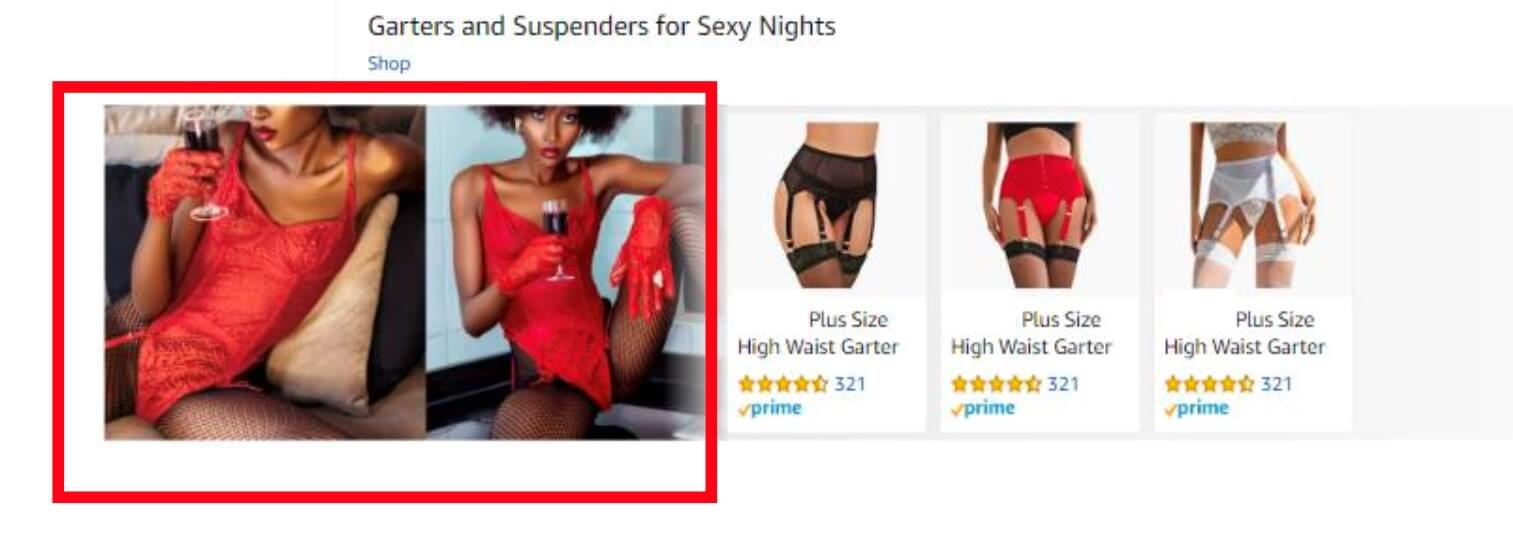
Image ref: Amazon
What causes rejection?
Amazon maintains strict policies against sexually suggestive content in advertisements to create a safe and respectful shopping environment. Rejections can occur when ad content violates these policies. Here are the specific elements that can lead to rejection:
Sexually suggestive poses: Avoid using images featuring sexually suggestive poses that may include models in provocative positions.
Intimate body parts: Ensure that your ad images do not unduly focus on intimate body parts, as this can be considered sexually suggestive.
Sexual innuendo: Refrain from using sexual innuendo in ad copy or imagery, as it can create an uncomfortable or offensive viewing experience.
Depictions of minors in sexual situations: Any depictions of minors in sexual situations are strictly prohibited.
Suggestive undressing: Ads should not depict models in the process of undressing suggestively.
Models in sexy lingerie: Avoid using images of models in overly revealing or suggestive lingerie.
How to avoid rejection
Ensure that your ad content adheres to Amazon's policies regarding provocative content and maintains a professional and respectful tone.
Wrapping it up
In conclusion, understanding and adhering to Amazon's guidelines for Sponsored Brands static image advertising is crucial for a successful and compliant advertising campaign. By avoiding these common rejection reasons, you can ensure that your ads reach a wider audience and drive the results you desire.
When it comes to navigating the Amazon advertising platform, partnering with Amazon consulting experts like eStore Factory can make all the difference. Our team of seasoned Amazon PPC management professionals understands the ins and outs of Amazon's advertising policies and guidelines. We not only ensure that your Sponsored Brand ads get approved without a hitch but also work tirelessly to make them truly successful.
Amazon Sponsored Brands ads play a pivotal role in boosting brand awareness and driving customer engagement. However, gaining approval for these campaigns can sometimes be a challenging and intricate process due to Amazon's stringent guidelines. We understand that navigating these guidelines can feel like a headache, but fear not. Our Amazon PPC optimization experts have developed a comprehensive set of guidelines to help you get your Sponsored Brands approved seamlessly.
Common rejection reasons for Sponsored Brand ads
#1: Grammar and language requirements

Image ref: Amazon
What causes rejection?
Amazon places a high value on clear and accurate language in advertising. Common issues leading to rejection include:
Misspellings/typos: Your ad copy should be entirely free from spelling errors or typographical mistakes. Even minor misspellings can detract from the professionalism of your ad.
Excessive punctuation: Avoid overusing punctuation marks in your ad text. Excessive use of punctuation can make your ad appear cluttered and less appealing.
Incorrect grammar: To ensure clarity and readability, it's crucial to use proper grammar and maintain the correct verb tense in your ad copy. Improper grammar can hinder comprehension and reflect negatively on your brand.
Slang or wordplay: While creativity in ad copy is essential, it's advisable to stick to formal language rather than relying on slang or wordplay. Amazon's audience spans diverse demographics, and using informal language may not resonate with all customers.
Unnecessary capitalization: Capitalize words appropriately in your ad copy. Avoid excessive capitalization, as it can make your text appear aggressive and less professional. Stick to standard capitalization rules.
How to avoid rejection
Proofread your ad copy meticulously to eliminate errors, and use language that adheres to standard grammar and Amazon's guidelines.
#2: Language requirements

Image ref: Amazon
What causes rejection?
Your ads should be in the primary language of the Amazon site where the ad is displayed. Rejection can occur if the language in your ad does not match the site's primary language.
How to avoid rejection
Ensure that your ad copy is in the primary language of the target Amazon site to prevent language-related rejection.
#3: Unsubstantiated claims

Image ref: Amazon
What causes rejection?
Amazon places a strong emphasis on the honesty and accuracy of claims made in advertising. Rejections can occur when ad content includes claims that lack verifiable evidence or fail to meet transparency standards. Here are the common issues that can lead to rejection:
Claims without evidence: It's crucial to avoid making claims in your ad copy that lack substantial evidence to support them. Making unverified or exaggerated claims can mislead customers and harm your brand's credibility.
Failure to disclose warranty: If your ad mentions a warranty, it's essential to ensure that this warranty is also transparently disclosed on the product detail page. Failing to do so can result in customer confusion and rejection.
Lack of citing sources: When citing statistics, facts, or figures in your ad copy, it's good practice to provide a credible source. Failing to cite sources for claims can lead to skepticism and rejection.
How to avoid rejection
Back up your claims with verifiable evidence and ensure that all mentioned warranties are transparently disclosed on the product detail page.
#4: Unrelated to product advertised

Image ref: Amazon
What causes rejection?
Your ad should align with the product being advertised on the product detail page. Rejection may occur if there is an inconsistency between the ad copy and the product detail page.
How to avoid rejection
Ensure that your ad accurately represents the product featured on the product detail page. Consistency is key to avoiding this type of rejection.
#5: Promotion end date

Image ref: Amazon
What causes rejection?
If you're running seasonal ads, they must only be advertised during the relevant promotional period and end on or before the actual date of the event. Advertisements with end dates that surpass the event date may face rejection.
How to avoid rejection
Carefully set your promotion end dates to align with the actual event date, ensuring that your ad remains compliant with Amazon's policies.
#6: Call to action (CTA)

Image ref: Amazon
What causes rejection?
One of the common reasons for Sponsored Brands static image rejection revolves around the Call to Action (CTA) within your ad copy. Rejection can occur when the CTA you use duplicates the default CTA provided by Amazon.
The CTA is a critical element of your ad because it directly influences the action you want potential customers to take. Whether it's encouraging them to "Shop Now," "Explore Deals," or "Learn More," your CTA should be clear, concise, and tailored to the specific message of your ad.
How to avoid rejection
Match CTA with ad objective: Tailor your CTA to match the primary objective of your ad. For instance, if your goal is to drive sales, a CTA like "Shop Now" is appropriate.
Avoid default CTAs: Whenever possible, avoid using Amazon's default CTAs. Customizing your CTA can make your ad stand out and better align with your brand message.
Clarity is key: Ensure that your CTA is crystal clear and leaves no room for ambiguity. Customers should immediately understand what action is expected of them.
#7: Duplicate ASIN or Image

Image ref: Amazon
What causes rejection?
Identical products or product images within the same ad are not allowed. If you repeat a product in your ad creative, it may face rejection.
How to avoid rejection
Ensure that your ad creative features unique products and images to prevent duplication-related rejections.
#8: Format of additional text

What causes rejection?
Amazon places great importance on the visual consistency and quality of advertising content. Rejections can occur when ad images contradict the product detail page or when additional text does not appear naturally within the ad creative. Here are the common issues that can lead to rejection:
Images contradicting the product detail page: Your ad images should align with the product being advertised on the product detail page. Any discrepancies or inconsistencies can result in rejection.
Low-resolution or poor-quality images: To maintain a professional appearance, all images in your ad must be of high resolution and quality. Blurry or pixelated images can diminish the impact of your ad.
Non-natural placement of additional text: If your ad includes additional text, it should seamlessly complement the images and appear in a way that feels natural within the ad creative. Forced or awkward placement can lead to rejection.
How to avoid rejection
Ensure that any additional text in your ad creative complements the images and appears seamlessly within the ad.
#9: Brand logo

Image ref: Amazon
What causes rejection?
Brand logos should not have complex graphical backgrounds, be identical to a product image, contain a combination of logos, or include additional text that is not part of the brand logo or tagline/slogan.
How to avoid rejection
Review your brand logo to ensure it complies with Amazon's guidelines, avoiding complex backgrounds or extraneous text.
#10: Provocative content

Image ref: Amazon
What causes rejection?
Amazon maintains strict policies against sexually suggestive content in advertisements to create a safe and respectful shopping environment. Rejections can occur when ad content violates these policies. Here are the specific elements that can lead to rejection:
Sexually suggestive poses: Avoid using images featuring sexually suggestive poses that may include models in provocative positions.
Intimate body parts: Ensure that your ad images do not unduly focus on intimate body parts, as this can be considered sexually suggestive.
Sexual innuendo: Refrain from using sexual innuendo in ad copy or imagery, as it can create an uncomfortable or offensive viewing experience.
Depictions of minors in sexual situations: Any depictions of minors in sexual situations are strictly prohibited.
Suggestive undressing: Ads should not depict models in the process of undressing suggestively.
Models in sexy lingerie: Avoid using images of models in overly revealing or suggestive lingerie.
How to avoid rejection
Ensure that your ad content adheres to Amazon's policies regarding provocative content and maintains a professional and respectful tone.
Wrapping it up
In conclusion, understanding and adhering to Amazon's guidelines for Sponsored Brands static image advertising is crucial for a successful and compliant advertising campaign. By avoiding these common rejection reasons, you can ensure that your ads reach a wider audience and drive the results you desire.
When it comes to navigating the Amazon advertising platform, partnering with Amazon consulting experts like eStore Factory can make all the difference. Our team of seasoned Amazon PPC management professionals understands the ins and outs of Amazon's advertising policies and guidelines. We not only ensure that your Sponsored Brand ads get approved without a hitch but also work tirelessly to make them truly successful.
Amazon Sponsored Brands ads play a pivotal role in boosting brand awareness and driving customer engagement. However, gaining approval for these campaigns can sometimes be a challenging and intricate process due to Amazon's stringent guidelines. We understand that navigating these guidelines can feel like a headache, but fear not. Our Amazon PPC optimization experts have developed a comprehensive set of guidelines to help you get your Sponsored Brands approved seamlessly.
Common rejection reasons for Sponsored Brand ads
#1: Grammar and language requirements

Image ref: Amazon
What causes rejection?
Amazon places a high value on clear and accurate language in advertising. Common issues leading to rejection include:
Misspellings/typos: Your ad copy should be entirely free from spelling errors or typographical mistakes. Even minor misspellings can detract from the professionalism of your ad.
Excessive punctuation: Avoid overusing punctuation marks in your ad text. Excessive use of punctuation can make your ad appear cluttered and less appealing.
Incorrect grammar: To ensure clarity and readability, it's crucial to use proper grammar and maintain the correct verb tense in your ad copy. Improper grammar can hinder comprehension and reflect negatively on your brand.
Slang or wordplay: While creativity in ad copy is essential, it's advisable to stick to formal language rather than relying on slang or wordplay. Amazon's audience spans diverse demographics, and using informal language may not resonate with all customers.
Unnecessary capitalization: Capitalize words appropriately in your ad copy. Avoid excessive capitalization, as it can make your text appear aggressive and less professional. Stick to standard capitalization rules.
How to avoid rejection
Proofread your ad copy meticulously to eliminate errors, and use language that adheres to standard grammar and Amazon's guidelines.
#2: Language requirements

Image ref: Amazon
What causes rejection?
Your ads should be in the primary language of the Amazon site where the ad is displayed. Rejection can occur if the language in your ad does not match the site's primary language.
How to avoid rejection
Ensure that your ad copy is in the primary language of the target Amazon site to prevent language-related rejection.
#3: Unsubstantiated claims

Image ref: Amazon
What causes rejection?
Amazon places a strong emphasis on the honesty and accuracy of claims made in advertising. Rejections can occur when ad content includes claims that lack verifiable evidence or fail to meet transparency standards. Here are the common issues that can lead to rejection:
Claims without evidence: It's crucial to avoid making claims in your ad copy that lack substantial evidence to support them. Making unverified or exaggerated claims can mislead customers and harm your brand's credibility.
Failure to disclose warranty: If your ad mentions a warranty, it's essential to ensure that this warranty is also transparently disclosed on the product detail page. Failing to do so can result in customer confusion and rejection.
Lack of citing sources: When citing statistics, facts, or figures in your ad copy, it's good practice to provide a credible source. Failing to cite sources for claims can lead to skepticism and rejection.
How to avoid rejection
Back up your claims with verifiable evidence and ensure that all mentioned warranties are transparently disclosed on the product detail page.
#4: Unrelated to product advertised

Image ref: Amazon
What causes rejection?
Your ad should align with the product being advertised on the product detail page. Rejection may occur if there is an inconsistency between the ad copy and the product detail page.
How to avoid rejection
Ensure that your ad accurately represents the product featured on the product detail page. Consistency is key to avoiding this type of rejection.
#5: Promotion end date

Image ref: Amazon
What causes rejection?
If you're running seasonal ads, they must only be advertised during the relevant promotional period and end on or before the actual date of the event. Advertisements with end dates that surpass the event date may face rejection.
How to avoid rejection
Carefully set your promotion end dates to align with the actual event date, ensuring that your ad remains compliant with Amazon's policies.
#6: Call to action (CTA)

Image ref: Amazon
What causes rejection?
One of the common reasons for Sponsored Brands static image rejection revolves around the Call to Action (CTA) within your ad copy. Rejection can occur when the CTA you use duplicates the default CTA provided by Amazon.
The CTA is a critical element of your ad because it directly influences the action you want potential customers to take. Whether it's encouraging them to "Shop Now," "Explore Deals," or "Learn More," your CTA should be clear, concise, and tailored to the specific message of your ad.
How to avoid rejection
Match CTA with ad objective: Tailor your CTA to match the primary objective of your ad. For instance, if your goal is to drive sales, a CTA like "Shop Now" is appropriate.
Avoid default CTAs: Whenever possible, avoid using Amazon's default CTAs. Customizing your CTA can make your ad stand out and better align with your brand message.
Clarity is key: Ensure that your CTA is crystal clear and leaves no room for ambiguity. Customers should immediately understand what action is expected of them.
#7: Duplicate ASIN or Image

Image ref: Amazon
What causes rejection?
Identical products or product images within the same ad are not allowed. If you repeat a product in your ad creative, it may face rejection.
How to avoid rejection
Ensure that your ad creative features unique products and images to prevent duplication-related rejections.
#8: Format of additional text

What causes rejection?
Amazon places great importance on the visual consistency and quality of advertising content. Rejections can occur when ad images contradict the product detail page or when additional text does not appear naturally within the ad creative. Here are the common issues that can lead to rejection:
Images contradicting the product detail page: Your ad images should align with the product being advertised on the product detail page. Any discrepancies or inconsistencies can result in rejection.
Low-resolution or poor-quality images: To maintain a professional appearance, all images in your ad must be of high resolution and quality. Blurry or pixelated images can diminish the impact of your ad.
Non-natural placement of additional text: If your ad includes additional text, it should seamlessly complement the images and appear in a way that feels natural within the ad creative. Forced or awkward placement can lead to rejection.
How to avoid rejection
Ensure that any additional text in your ad creative complements the images and appears seamlessly within the ad.
#9: Brand logo

Image ref: Amazon
What causes rejection?
Brand logos should not have complex graphical backgrounds, be identical to a product image, contain a combination of logos, or include additional text that is not part of the brand logo or tagline/slogan.
How to avoid rejection
Review your brand logo to ensure it complies with Amazon's guidelines, avoiding complex backgrounds or extraneous text.
#10: Provocative content

Image ref: Amazon
What causes rejection?
Amazon maintains strict policies against sexually suggestive content in advertisements to create a safe and respectful shopping environment. Rejections can occur when ad content violates these policies. Here are the specific elements that can lead to rejection:
Sexually suggestive poses: Avoid using images featuring sexually suggestive poses that may include models in provocative positions.
Intimate body parts: Ensure that your ad images do not unduly focus on intimate body parts, as this can be considered sexually suggestive.
Sexual innuendo: Refrain from using sexual innuendo in ad copy or imagery, as it can create an uncomfortable or offensive viewing experience.
Depictions of minors in sexual situations: Any depictions of minors in sexual situations are strictly prohibited.
Suggestive undressing: Ads should not depict models in the process of undressing suggestively.
Models in sexy lingerie: Avoid using images of models in overly revealing or suggestive lingerie.
How to avoid rejection
Ensure that your ad content adheres to Amazon's policies regarding provocative content and maintains a professional and respectful tone.
Wrapping it up
In conclusion, understanding and adhering to Amazon's guidelines for Sponsored Brands static image advertising is crucial for a successful and compliant advertising campaign. By avoiding these common rejection reasons, you can ensure that your ads reach a wider audience and drive the results you desire.
When it comes to navigating the Amazon advertising platform, partnering with Amazon consulting experts like eStore Factory can make all the difference. Our team of seasoned Amazon PPC management professionals understands the ins and outs of Amazon's advertising policies and guidelines. We not only ensure that your Sponsored Brand ads get approved without a hitch but also work tirelessly to make them truly successful.









